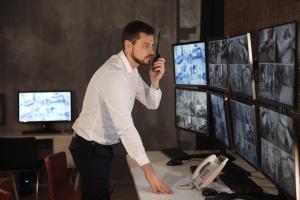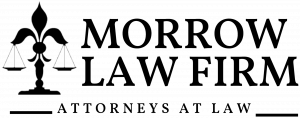
The Role of Surveillance Footage in Louisiana Accident Cases
“Surveillance footage provides an unbiased perspective, which is especially useful in cases where witness testimony may vary,” says Morrow. A clear visual record reveals details like driving speed, potential distractions, and adherence to traffic laws. By clarifying these factors, footage can substantively impact the comparative fault assessments used in Louisiana, which determines liability by assigning each party a percentage of fault. This visual evidence becomes pivotal in shaping case outcomes, especially when witness accounts conflict or lack precision.
Morrow explains that insurers frequently analyze footage to assess claim validity and determine fair compensation. “Insurers use footage to verify claim validity and evaluate compensation,” Morrow notes. Footage can help ensure that claims align with actual events, which supports more accurate compensation calculations. By confirming the extent of damages, surveillance also plays a preventive role against insurance fraud, as exaggerated or false claims are less likely to succeed with visual evidence as a reference.
Surveillance footage offers insights into environmental factors that contribute to an accident. Elements like road visibility, weather, and nearby obstacles are often documented in videos, providing a comprehensive view of the conditions at the time of the incident. These details may significantly impact how liability is assessed and help to provide context for actions taken by those involved.
However, as Morrow underscores, using surveillance footage in legal cases requires strict adherence to Louisiana’s privacy and evidentiary standards. “It’s essential to confirm that footage was obtained legally and meets court admissibility standards,” he states. Using footage from private property or personal devices must follow state privacy laws, and it’s crucial to obtain the footage through appropriate channels. Morrow emphasizes the importance of verifying that all surveillance material adheres to legal requirements to avoid issues of admissibility in court and to ensure that evidence is both reliable and legally sound.
Obtaining surveillance footage involves challenges, such as securing cooperation from property owners or businesses that control the cameras. In some cases, acquiring footage may require subpoenas or other legal documentation. Additionally, time is of the essence, as surveillance systems often overwrite old footage, making timely action a priority. Morrow advises parties involved in accident cases to seek video evidence as soon as possible to maximize its availability and usefulness.
In Louisiana accident cases, surveillance footage has become a reliable tool in clarifying complex details. By offering an objective view, verifying claims, and providing environmental context, video evidence supports a fairer and more transparent process. As surveillance technology becomes more accessible, Morrow Law Firm continues to utilize it strategically to support clients and uphold the integrity of accident investigations.
Morgan Thomas
Rhino Digital, LLC
+1 504-875-5036
email us here
Distribution channels: Business & Economy, Insurance Industry, Law
Legal Disclaimer:
EIN Presswire provides this news content "as is" without warranty of any kind. We do not accept any responsibility or liability for the accuracy, content, images, videos, licenses, completeness, legality, or reliability of the information contained in this article. If you have any complaints or copyright issues related to this article, kindly contact the author above.
Submit your press release

